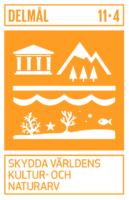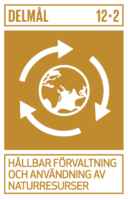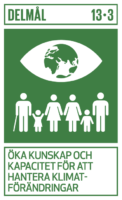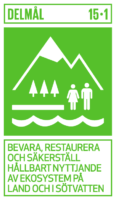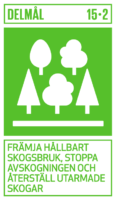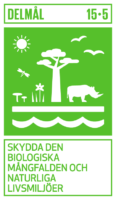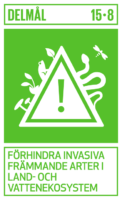Background
In the ongoing digitalization in forest management, the trend has for many years been to increase the use of data for individual trees to optimize the use of the biomass. This was first manifested in forest machines that automatically optimize the cutting of trees instead of relying on the operator’s judgement in order to reduce the waste material. Also, publicly available data sets are used to a greater extent with an increased resolution and precision, e.g. laser scans by Lantmäteriet1, which now has a resolution of up to 1 m, and meteorological and hydrological data from SMHI2. In the Nordic countries, there are a number of initiatives in the field, where two of the larger ones are worth mentioning in this context:
- Mistra digital forest3 – The program is led by Skogsindustrierna and aims to increase digitalization in the whole value chain from the standing trees to the factory. The program shares some aspects with the Smart Twin project, but since they have a much wider scope, they do not go into the same detail in their work similar to the digital models in this project.
They use fewer sensor types and do not work with a unified and layered model and have no particular focus on visualization techniques.
- Metsä Group in Finland is developing a digital forest in collaboration with Tieto4. They are using state-of-the-art sensors, but not some of the novel sensors used in the Smart Twin project. As in the Mistra digital forest, there is no particular focus on novel visualization techniques.
Digital forest models are needed for forest management, guidance, planning and protection, where people can join to handle cases that need additional clarification or insight. This brings the need to combine short- and long-term economic efficiency with sustainability to view the current state of the art of the forest. A further development to improve resolution and user interaction is hence requested by the forest industry, and the Smart Twin project will provide important advances in terms of exploring the use of novel sensors and novel visualization/user interaction methods for a number of use cases relevant for the end-users in the project.
The end-users in this project are already involved in similar initiatives in the area. In these initiatives, they have identified some problems:
- Data for different uses are available in different apps, a unified model is missing
- Data is not available in high enough resolution
- Some important factors cannot be retrieved from the sensor data
- They lack in knowledge of what technology can provide for them.
In this project, we aim at resolving these issues by including many sensor types, by using advanced visualization techniques, and by demonstrating new possibilities with the available technologies. Likewise, the project shall provide a platform for new knowledge and insights.
The previous project, Visual Sweden platform project Intelligent n-dimensional modeling by multidimensional sensor informatics for computer vision and visualization (n-D project) was completed by sixteen partner organizations, expanding 3D models of urban and rural areas into digital twins by using a variety of sensors providing different layers of information. n-D modeling is a data collection and aggregation platform, which provides a rich framework for advanced digitalization including a range of sensor and data fusion solutions that can be customized to attend user’s needs.
Project Goals
The goal of the project is to demonstrate two use cases; Smart Forest Twin and a Smart Wildfire Twin, based on user needs, and utilizing the best of sensor technology, visualization, and user knowledge. This will be demonstrated by a process chain that;
- starts from the needs of the end users to create a smart twin of the forest to demonstrate the added value,
- creates a platform that can increase the ability to show the added value of the products and services of the participating partners for a specific part of the market, and
- shows how information can support forestry.
Another goal is to
- build an open atmosphere of sharing knowledge among the partners in order to promote new partner collaborations, both for research and for new commercial ideas.
There are several possibilities to exploit the project results. Here we’ll address other application areas, company growth and academy.
Smart Twin can be used for similar application areas;
- City parks and expansion, to plan and analyze the impact of growing cities
- Property valuation, to analyze and report damages to forest from wildfires, storms etc.
- Documenting and monitoring cultural or historical interests
- Autonomous power line inspection for maintenance and repair
- Command and Control by visualizing new and time critical information in rescue operations
Partners
The end-user partners are;
- Vattenfall
- Mellanskog
- Boxholms Skogar
- Skogstekniska klustret
- Räddningstjänsten Östra Götaland
- Swedish Police Authority
Academic partners are;
- RISE Research Institutes of Sweden
- Linköping university, CVL
- KTH Media Lab
Participating tech-companies are;
- Glana
- Deep Forestry
- MainBase
- Precendia (spin-off from SmartAgritech)
- Spotscale
- Termisk systemteknik
- Vricon


